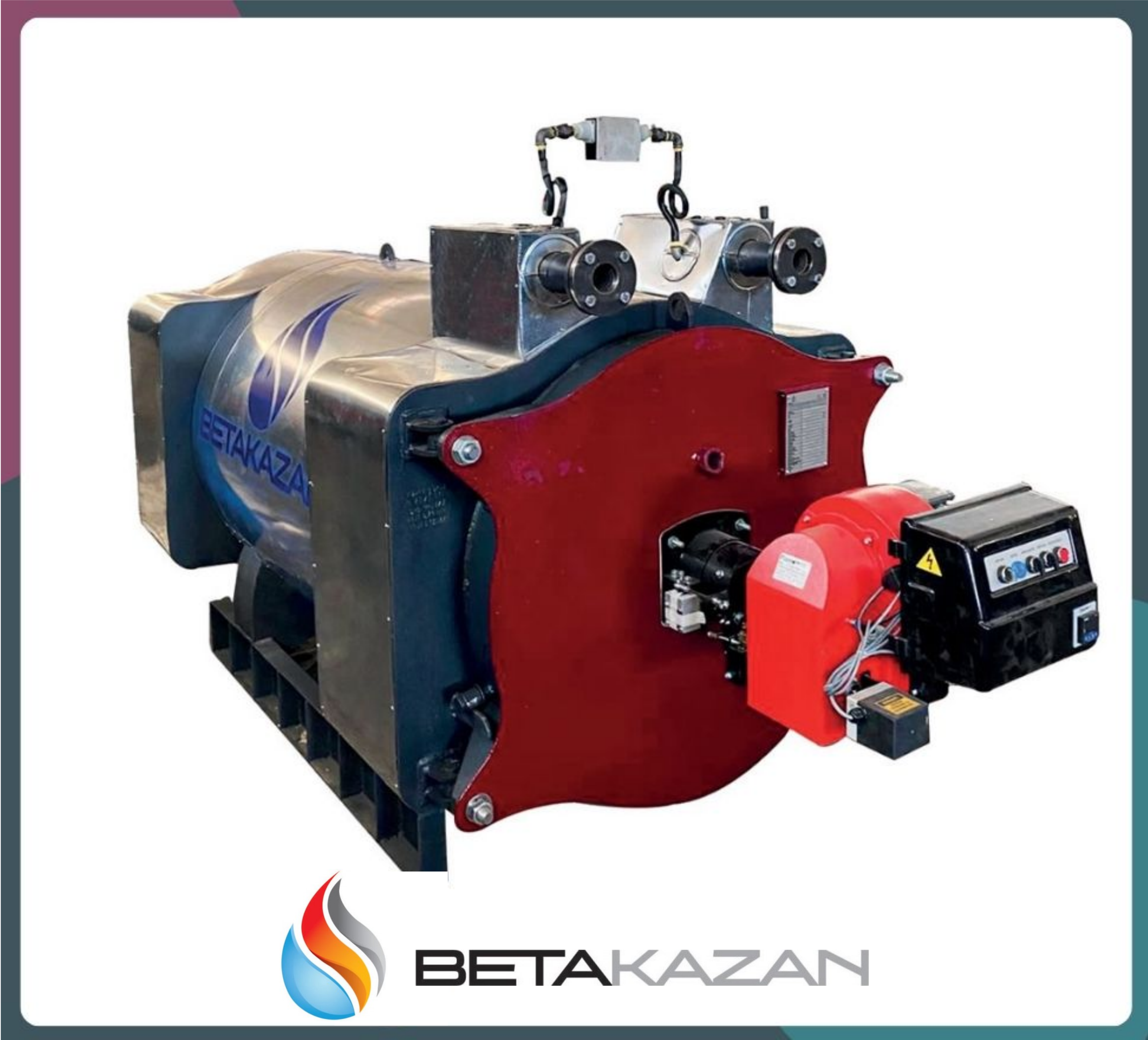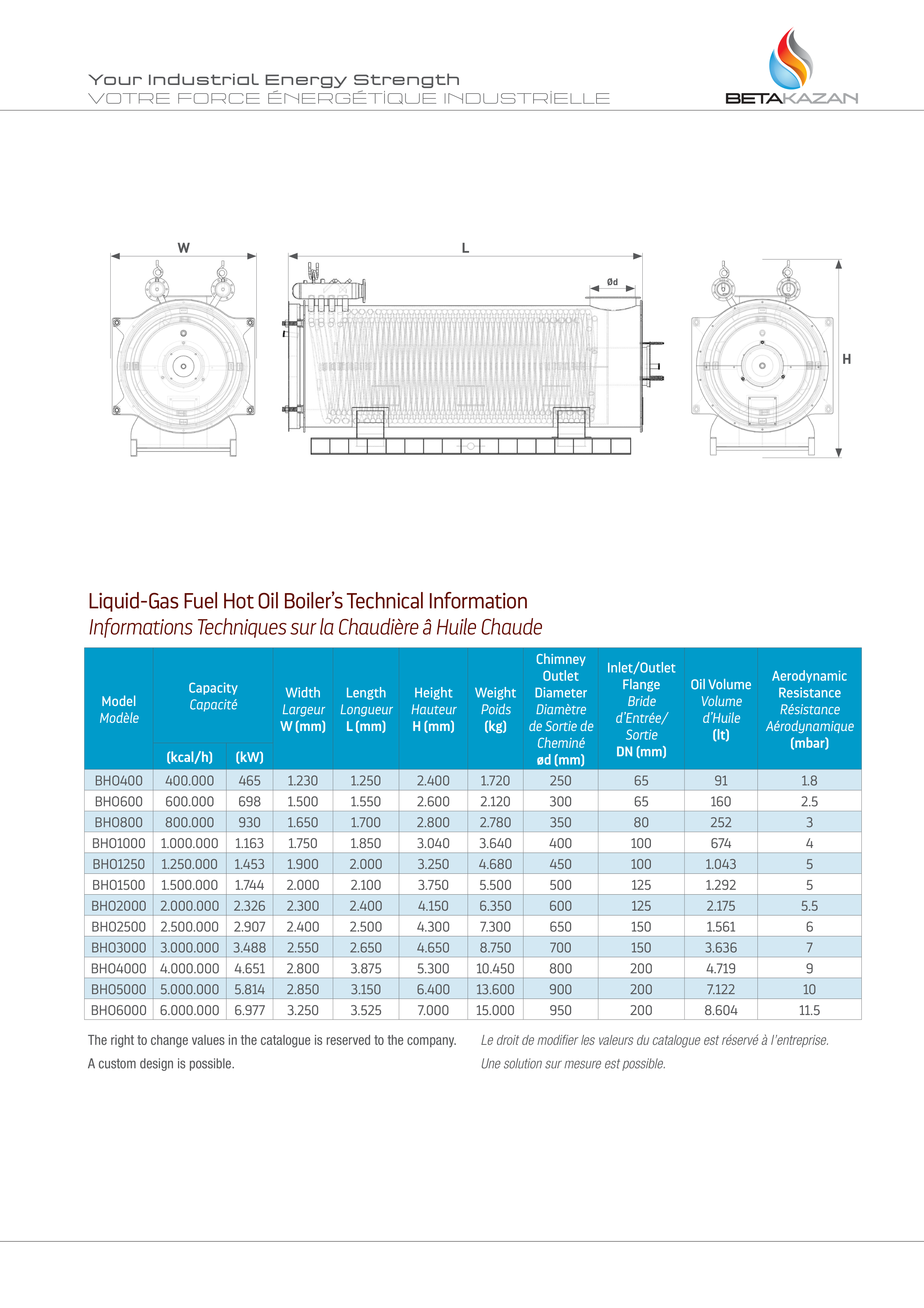
BHO Model
In many branches of industry, it is necessary to reach high temperatures for production processes. The heat energy required for these processes is transmitted by steam. However, due to the temperature needed for the processes, the increase in the boiling point of the water and the high pressure required, the investment and operating costs of the steam boilers increase and a safe operation becomes difficult. Hot oil boilers are used to meet the heat energy need effectively and safely at temperatures above 300°C.
The special heat transfer oil used in hot oil boilers designed from spiral pipes is safely heated up to 300°C without losing any of its physical properties. Therefore, a very high pressure is not required.
The pressure in the system is the pump pressure that will overcome the resistance in the infrastructure. Although the heat transfer oil is heated to 300°C, it can be used under atmospheric pressure because it is below the boiling point. Thermal oil does not leave residues in the infrastructure, corrode or freeze in normal climates. Besides that, no purification is needed and temperature management can be done perfectly with automatic control valves.
Due to the operating temperatures of the hot oil boiler, the flue gas temperature is higher than those in its steam counterpart. However, if losses associated with condensate, blowdown, flash steam and feed water are considered in the steam system, the efficiencies of both hot oil and steam boilers are comparable.
It is possible to increase the efficiency of the boiler by adding an economizer or an air heater to the chimney for heat recovery. In addition, the need for steam in the process can be met with hot oil heat exchangers.
Heating surfaces of hot oil boilers are manufactured from nested spirally bent boiler pipes in accordance with EN 10216-2. Thanks to this serpentine design, there is no stagnant point in the hot oil circulation.
